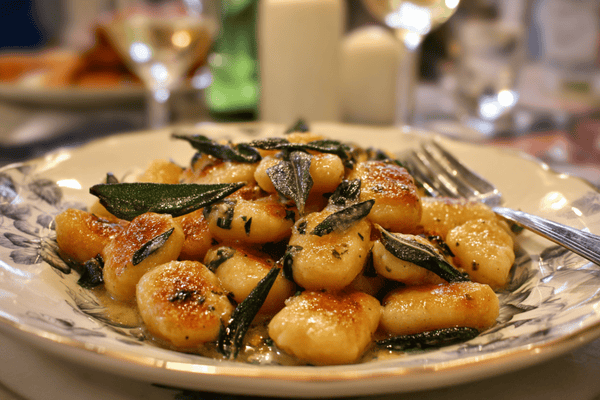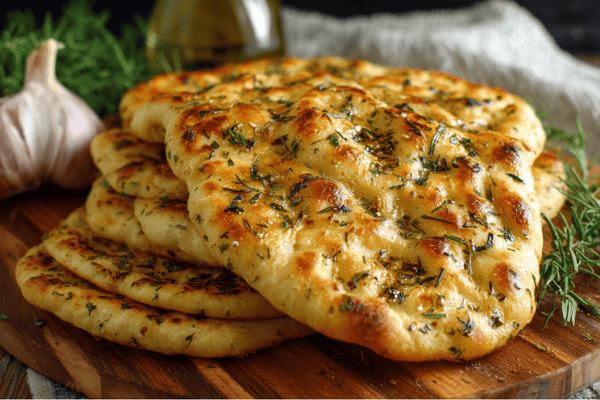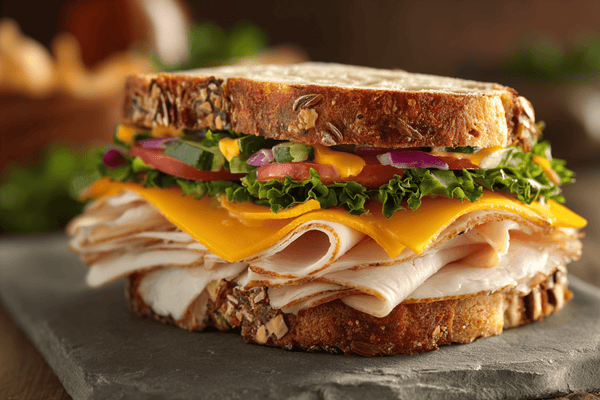
As Santoku knives grow in popularity worldwide, and in particular in the Western world, it’s becoming more important to know what this, Japanese equivalent to a Western chef’s knife, is best used for.
Santoku knives are typically high-quality knives that many people consider to be an investment and their versatile use can often be misinterpreted. The versatility of this knife will depend solely on how you use it and what you use it to cut.
A Santoku knife, derived from the meaning “three virtues” or “three uses” is a multi-purpose knife that is best used for chopping, slicing, dicing, and mincing. The knife’s general-purpose use means that it is well suited to chopping or slicing vegetables, cutting or mincing meat, and slicing fine cuts of seafood. The Santoku is also referred to as the Japanese equivalent of a Western Chef’s knife.
While a Santoku knife is a general-purpose knife that is well suited to a variety of different uses, it is important to know the areas in which this knife will excel and also where it will struggle as general-purpose does not mean it can do everything! So a santoku knife: what is it used for?
Table of contents
- Specific Characteristics of Santoku Knife
- What Is a Santoku Knife Best Used For?
- What Are the Advantages of Using a Santoku Knife?
- How to Use a Santoku Knife
- Different Styles of Santoku Knives
- What Types of Foods Would You Use a Santoku Knife For?
- What Is the Difference Between a Chefs' Knife and a Santoku Knife?
- Size and Weight
- Blade Design
- Bevel
- Final Thoughts
- FAQ
Specific Characteristics of Santoku Knife
- Santoku knives are typically smaller than chef's knives, with a blade length ranging from about 5 to 8 inches. They have a shorter, wider blade than chef's knives, which makes them well-suited for slicing, dicing, and mincing.
- Santoku knives have a distinctive shape, with a curved spine and a straight edge. This shape allows for a rocking motion when chopping, which can be more efficient and precise than the back-and-forth chopping motion used with chef's knives.
- Santoku knives usually have a relatively thin blade and a sharp edge angle, typically between 10 and 15 degrees. This makes them very sharp and capable of making clean cuts through a variety of foods.
- Some Santoku knives have a granton edge, which means that there are small divots or scallops along the edge of the blade. These divots help to reduce friction and prevent food from sticking to the blade as you cut.
What Is a Santoku Knife Best Used For?

What's a santoku knife? Santoku knives are one of the most popular knives in both Japanese and Western households, they are designed for precision cutting and the great importance of this knife is its ability to make ultra-fine cuts on a variety of different food types.
As mentioned earlier, the name Santoku bōchō (Japanese: 三徳包丁) Can be translated to mean “three virtues” or further translated (for Western users) to mean three uses or three purposes which is a result of the knife’s design being optimized for mincing, dicing and slicing or for the type of food that it is commonly used with like meat, fish and vegetables.
This all-purpose use is the reason this knife is a kitchen staple in Japanese households and it has multiple advantages when used properly.
What Are the Advantages of Using a Santoku Knife?
What's a santoku knife for? The main advantage of using a Santoku knife is the precise and fine cuts that it can provide.
Japanese manufactured knives will typically hold a sharper edge and this is true for both the double bevel and single bevel designs.
As a result of the sharper edge, a Santoku knife can not only provide a much more precise and fine cut but it can also better preserve the flavour of the food which is an essential component for traditional Japanese cuisine and dishes.

By holding a sharper edge, a Santoku knife can cleanly pass through the food's cell membrane, and without getting too technical or scientific, this clean pass maintains the cell integrity of the food for a more enhanced flavour.
The easiest way to tell that a knife is not cleanly passing through the food (as a result of holding a dull edge) is when juice or parts of the food are left on the chopping board or knife after a cut.
A sharp Santoku will leave minimal juice on the chopping board which is crucial when chopping fruit and vegetables. The design of a Santoku knife is also optimized for professional use and you’ll find that the knife is lightweight with a balanced weight distribution which allows for easy maneuverability and long duration use without fatiguing the user.
The shorter blade is also easier to control, which is one particular reason that this knife has become so popular in a lot of households.
A Western chef's knife can usually range from 8” - 12” in size which is noticeably more than the average 5” - 8” Santoku and is the reason why many Western cooks are choosing to use the smaller and easier to control Santoku.
How to Use a Santoku Knife
A Santoku knife is a versatile and essential tool in any kitchen. It is a Japanese-style knife that is commonly used for slicing, dicing, and chopping a wide variety of ingredients.
The name Santoku, which means "three virtues," refers to the knife's ability to handle three tasks: slicing, dicing, and chopping.
Slicing: When slicing ingredients with a Santoku knife, hold the ingredient securely on a cutting board and use a rocking motion to guide the knife through the ingredient.
Start by positioning the tip of the knife on the cutting board and then rock the knife back and forth while applying slight pressure. This technique is best used for slicing meats and fish.
Dicing: Dicing ingredients with a Santoku knife requires a bit more precision and control than slicing. First, slice the ingredient into small, uniform pieces.
Next, make a series of evenly spaced, perpendicular cuts to create small cubes. To ensure even dicing, make sure to hold the ingredient securely on the cutting board and guide the knife with a rocking motion. This technique is best used for dicing vegetables and fruits.
Chopping: Chopping with a Santoku knife involves using a downward motion to hack through ingredients. This technique is best used for tougher ingredients like nuts and root vegetables.
To chop an ingredient, position the tip of the knife on the cutting board and then use a swift, downward motion to chop through the ingredient.
When using a Santoku knife, it's important to use a sharp knife, as it makes the cutting process easier and safer. To maintain a sharp edge on your knife, make sure to sharpen it regularly with a honing steel or a sharpening stone.
Different Styles of Santoku Knives
Santoku knives are a popular and versatile type of kitchen knife that are known for their thin, sharp blades and distinctive shape. These knives are well-suited for a wide range of tasks, including slicing, dicing, and mincing.
There are many different styles of Santoku knives available, each with its own unique features and benefits. Here are a few examples of the different options you might encounter:
- Granton edge Santoku knives: These knives have small divots or scallops along the edge of the blade, which help to reduce friction and prevent food from sticking to the knife as you cut. Granton edge Santoku knives are particularly well-suited for slicing meats and other delicate foods.
- Ceramic Santoku knives: These knives are made from extremely hard, sharp ceramic material that is resistant to wear and corrosion. They are lightweight and easy to handle, but can be brittle and prone to chipping if not handled carefully.
- Stainless steel Santoku knives: These knives are made from stainless steel, which is a durable and corrosion-resistant material. They are easy to clean and maintain, but may not be as sharp as some other types of Santoku knives.
- Damascus steel Santoku knives: These knives are made from a type of steel that is known for its beautiful, decorative patterning. They are highly prized by collectors and knife enthusiasts, but can be more expensive than other types of Santoku knives.
What Type of Foods Would You Use a Santoku Knife For?

Santoku knives are a multi-purpose knife that is designed for a range of cutting, slicing and chopping purposes. For this reason, you can actually use a Santoku knife on a wide variety of foods which can include:
- Chopping vegetables: As a result of its ability to make fine cuts, a Santoku knife is well-suited to slicing and chopping vegetables and making decorative cuts for dish presentation.
- Meat: Slicing and making rough cuts on meat are common with a Santoku, however, it’s worth noting that due to a shorter and thinner blade, this knife is not well suited to cutting dense meat with tough cartilage and bone.
- Seafood: A Santoku knife is arguably, used most commonly for slicing and chopping seafood (particularly raw fish).
- Fruits: Santoku knives can be used to slice and chop a variety of fruits, such as apples, pears, and mangoes. To make precise cuts, try using a rocking motion with the knife as you slice.
- Herbs:The thin, sharp blade of a Santoku knife is perfect for finely mincing herbs like parsley, cilantro, and basil. To make the job easier, try stacking the herbs and then slicing through them with the knife.
- Nuts: A Santoku knife can be used to chop nuts into small pieces for baking or cooking. To prevent the nuts from crumbling or becoming too fine, try using a gentle sawing motion with the knife.
- Bread:Santoku knives can be used to slice bread into thin or thick slices, depending on your preference. To get clean cuts, make sure to use a sawing motion and avoid applying too much pressure on the blade. please note that the blade needs to be sharp, and It will never replace a bread knife.
What Is the Difference Between a Chefs' Knife and a Santoku Knife?

A common misconception is that a Santoku and Western chef's knife are the same thing and whilst there are some similarities, they are completely different knives with different uses.
Below are just a few of the key differences that influence how these knives are commonly used:
Size and Weight
A Santoku knife is typically shorter, thinner, and lighter than a Western chef’s knife which makes it easier to manoeuvre but restricts the size and density of foods that it can work with.
A Santoku knife can range in size from 5” - 8” which is on the shorter side when it comes to an all-purpose knife, especially compared to a Western chef's knife which can range in size from 8” -14” (with 10” - 12” most commonly used).
Blade Design
A Western chef’s knife has a more noticeable blade design as a result of the slight curvature from the heel to the tip of the blade, this allows the user to adopt a rocking motion and make use of the pinch grip cutting technique.
A Santoku knife has a much flatter edge with curvature from the spine to the tip which is designed as a safety aspect to reduce the chance of a novice user cutting themselves.
A chef’s knife is typically made of stainless steel which is tougher, easier to clean, and more resistant to corrosion and rust , although it doesn’t hold its edge well and therefore requires more regular sharpening.
A Santoku knife can be made from a variety of materials with a high-quality carbon-steel blend being the most common.
This allows the knife to be thinner, lighter, and hold a sharper edge for longer periods of use (requiring less maintenance), though it does have some drawbacks as it can be more prone to chipping and rust if not carefully looked after.
Bevel
While western knives are predominantly double bevel-edged, a Santoku knife is unique in that it can have a double bevel (as a result of its increased popularity in Western society) or it can also be manufactured to have a single bevel edge which creates a much sharper knife.
A Santoku knife has an edge that is further enhanced when utilizing a Granton edge, this allows the blade to move more freely between food without food sticking to the knife for a cleaner and more precise cut.
Final Thoughts
A Santoku knife is one of the most versatile and commonly used kitchen knives worldwide (providing very close competition for a Western chef’s knife).
Its general purpose makes it well-suited to mincing, slicing, and dicing and the precision and control means you can use it on a variety of food types including meat, seafood, fruit, and vegetables.
While it’s noticeably versatile, it’s also worth keeping in mind that this knife does have limitations and cannot be used for everything in the kitchen!
The shorter and thinner blade means it’s not ideal for larger and denser foods (particularly certain meat and fruits) and a lot of professional chefs prefer a blade to be around 10” - 12” in length for added versatility of use.
FAQs
Q: Do I need a chef's knife and a Santoku knife?
A: The santoku is a Japanese knife that's designed for chopping up ingredients into small pieces. You need a chef's knife and about six more knives to make up for the santoku.
Q: What is the difference between a chef's knife and a Santoku knife?
A: The key difference between these types of knives is their blade shapes. Slicing, dicing, and chopping tasks are all best served with either a chef's knife or a santoku western.
The shape of the blade prevents food from getting squished and smushed between the cuts. There are typically two options for each type - one with a curved end and one without a curve on its end, called "western."
The western style works great in multi-tasker kitchens because it can be used to not only chop up herbs for seasoning but also serve as your traditional kitchen knife as well.
It excels at finer mincing that those power hacks require more finesse since the curved edge lowers risk of cutting yourself.
Q: How do I know what knife to use?
A: Knives are not just for cutting your food to eat it. They can be great tools and helpers when cooking so that your food preparation time is decreased.
Santoku knives originate from Japan, which means they have been widely used for more than a century. So you know they work wonders in the kitchen!
Though santoku come in different shapes, sizes, sharpness levels, and blade lengths around the world - many chefs prefer this type of knife because its size make it versatile to use without lots of extra effort which makes it a good all-around choice for anyone looking to maximize their cooking experience!
Q: Can a Santoku knife replace a chef's knife?
A: A Santoku knife and a chef's knife are both versatile knives that can be used for a wide variety of cutting tasks in the kitchen.
However, they are not interchangeable and have some key differences. A Santoku knife is typically shorter and lighter than a chef's knife and has a shorter blade with a flatter edge.
This makes it better suited for cutting and chopping small or delicate ingredients, while a chef's knife is better for larger, tougher cutting tasks. Additionally, a Santoku knife is typically sharper than a chef's knife, making it a good choice for tasks that require precision cutting. Overall, while a Santoku knife can be a useful addition to any kitchen, it is not a replacement for a chef's knife.
Q: Can you cut meat with a Santoku knife?
A: Yes, a Santoku knife can be used to cut meat. Its shorter, flatter blade is well-suited for slicing and chopping small to medium-sized pieces of meat, such as chicken breasts or pork chops.
However, because a Santoku knife is typically shorter and lighter than a chef's knife, it may not be the best choice for cutting through larger or tougher cuts of meat.
In those cases, a chef's knife or a cleaver would be a better choice. Ultimately, the type of knife you use to cut meat will depend on the specific task at hand and your personal preference.
Q: Can you rock chop with a Santoku?
A: Yes, a Santoku knife can be used for rock chopping. The Santoku knife is a versatile knife that is well-suited for a variety of cutting tasks, including rock chopping. Its shorter blade length and lighter weight make it a good choice for this technique.
To rock chop with a Santoku knife, hold the knife firmly with a pinch grip and use a rocking motion to chop the food into small pieces. Be sure to keep your fingers curled under and out of the way of the blade to avoid any accidents.


